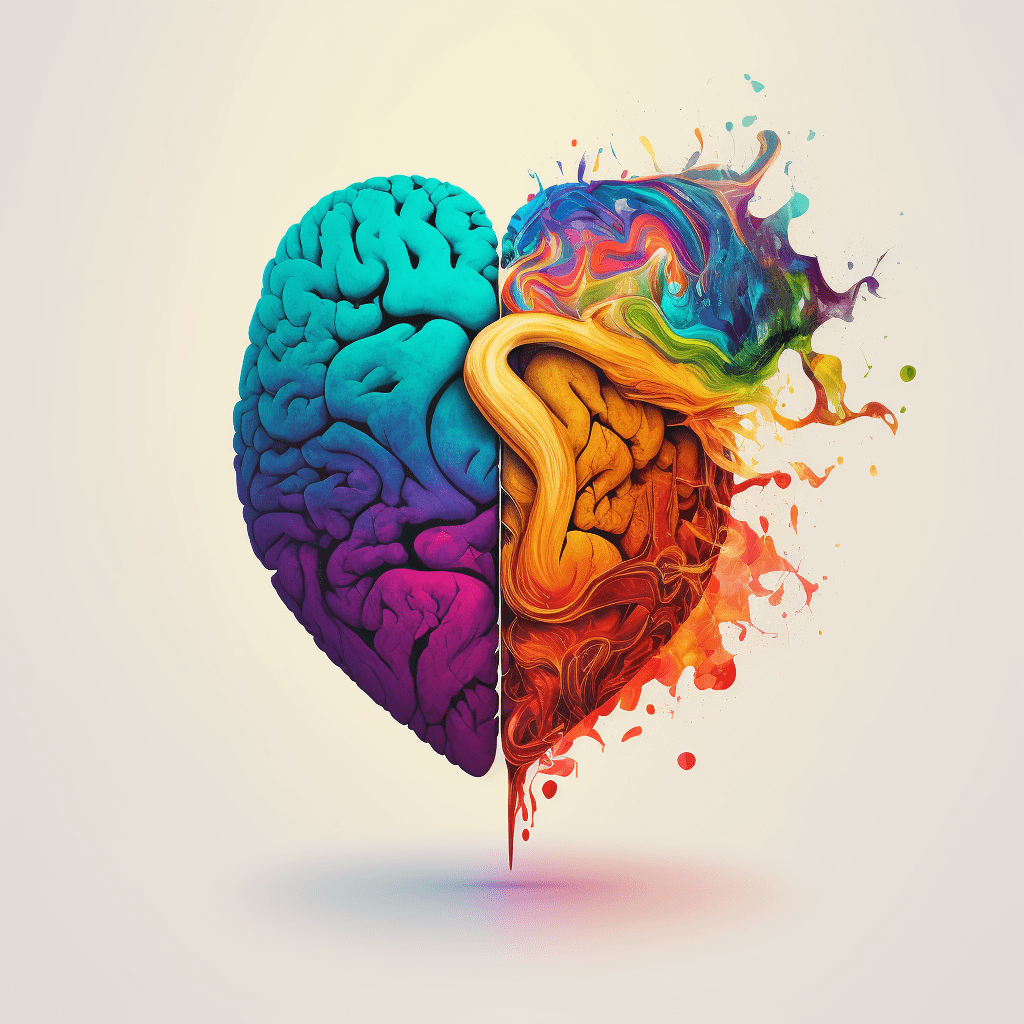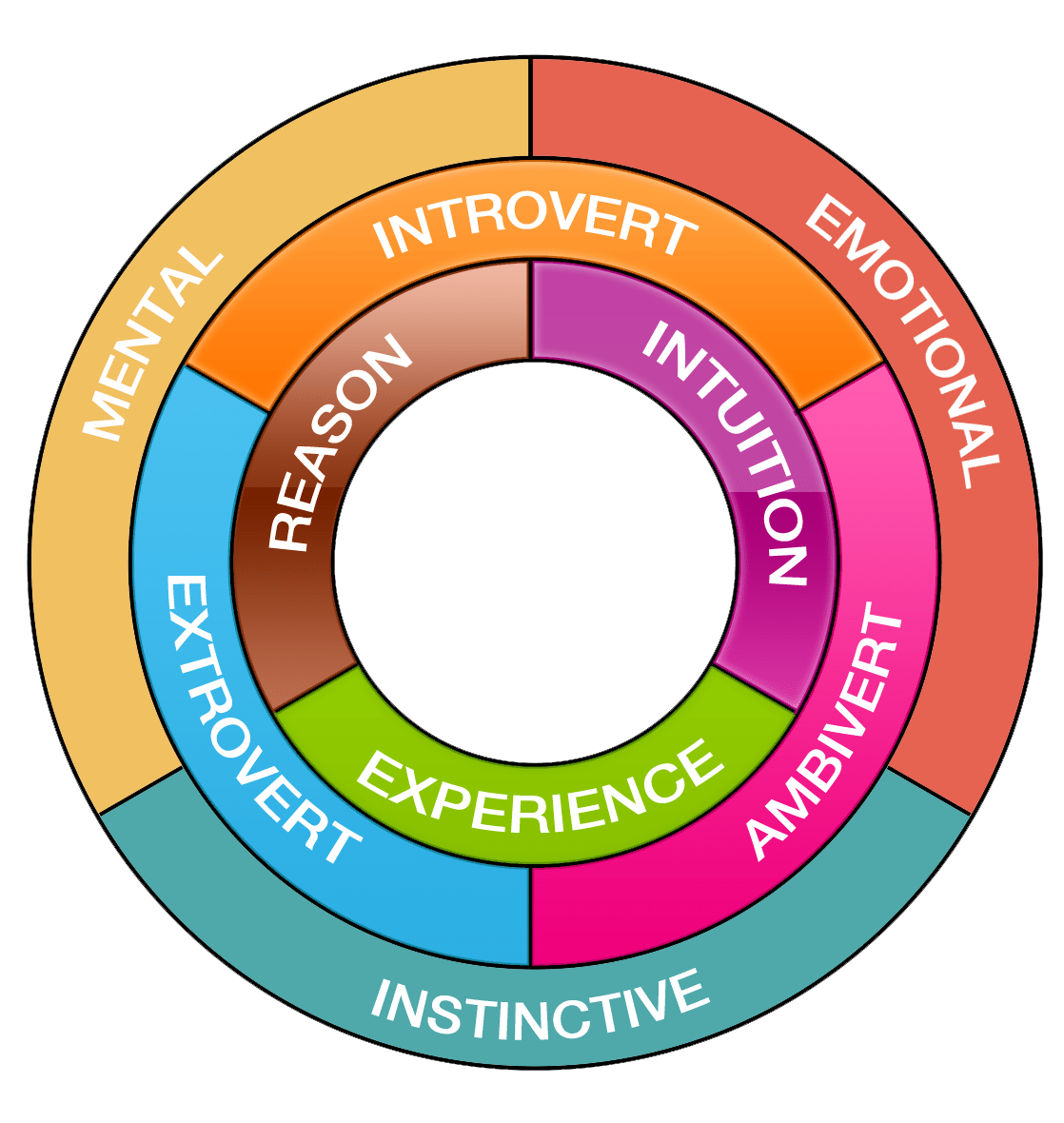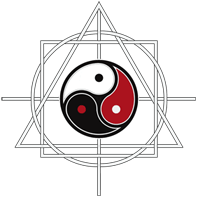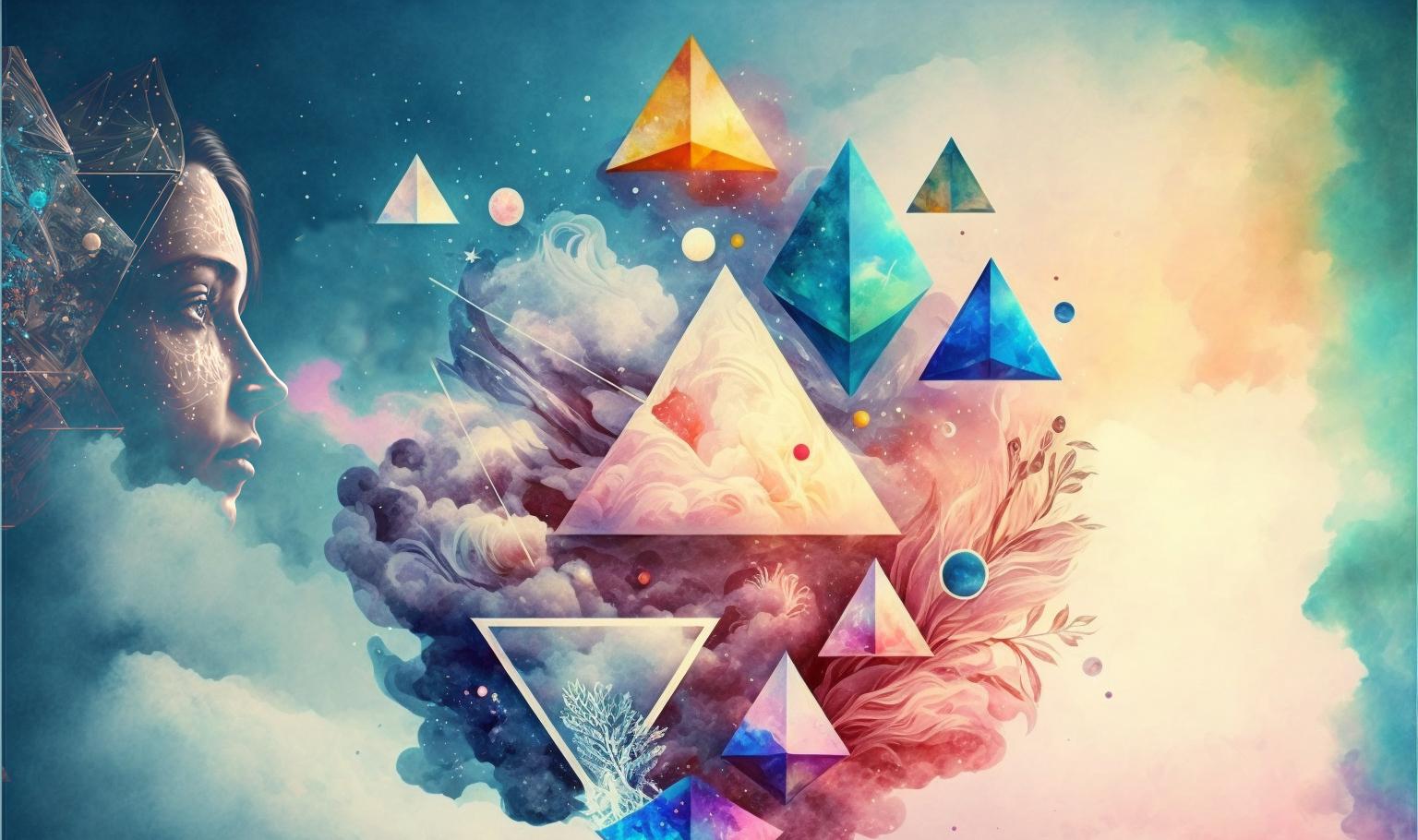
The First Personality Reading Based On
The Sacred Geometry Of Your Name Symbols.
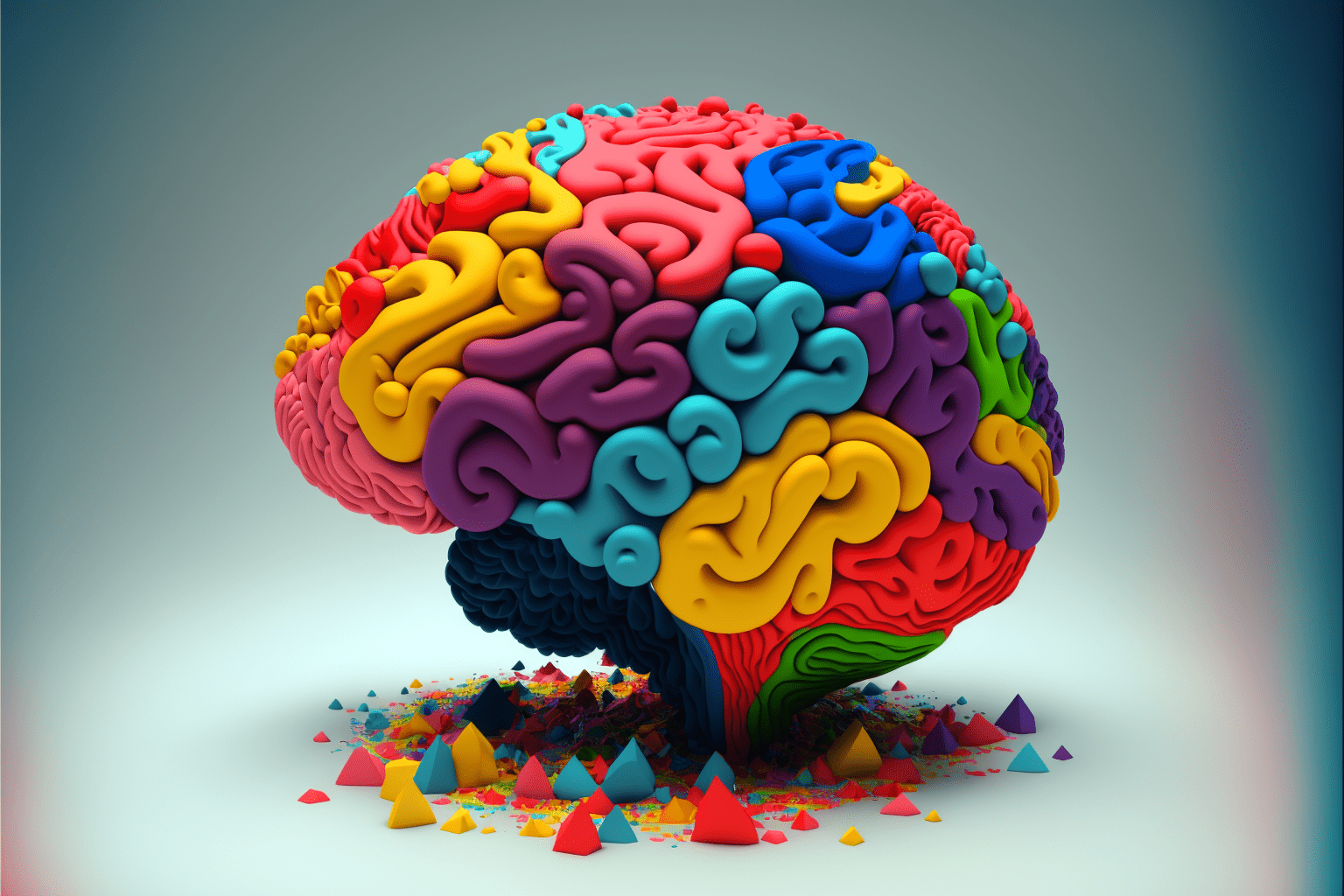
Jung divides individuals into two broad psychological categories:
It also distinguishes four psychological types that correspond to the four means or functions by which our consciousness manages to orient itself in relation to existence:
In the table below, we summarize the characteristics relating to the 4 functions and the 2 orientations.
The Myers Briggs Type Indicator (MBTI) adds a new category: Perception and Judgement to distinguish between irrational types based on perception (sensation and intuition) and rational types based on judgement (thinking and feeling). This in itself seems incoherent knowing that the condition of a good classification depends on the exclusion of criteria among themselves.
This classification based on couples of opposites does not seem to us the best adapted to deal with the psychology of the human structure, based on a ternary model.
| Where do you get your energy from? | Extroversion Centered on the outside world. | Introversion Centered on the inner world of ideas and thoughts. |
| How do you collect information? | Sensation Centers its attention on reality as perceived by the 5 senses. Observes details. | Intuition Perceives information in the form of ideas, concepts, associations between facts. Oriented towards future possibilities. Global vision. |
| How do you make your decisions? | Thinking Decides based on a logical process. Seeks objectivity. | Feeling Decides based on personal values and impact on others. |
| How you behave in the outside world? | Jugement Preference for a structured, organized life. Likes to plan, to have things decided in advance. | Perception Preference for spontaneity and flexibility. Likes to leave options open as long as possible. |
Geonumerology allows to find all these criteria + 1, the transmutation or integration, result obtained after solve and coagula, consequence of an extraversion felt internally and which causes a change.
Thought, feeling and sensation correspond to the three bodies: Mental, Emotional and Instinctive.
As for intuition, we place it next to reason and experience as a means of gathering and processing information.
Experience calls for empirical knowledge, often based on the memory of past experiences.

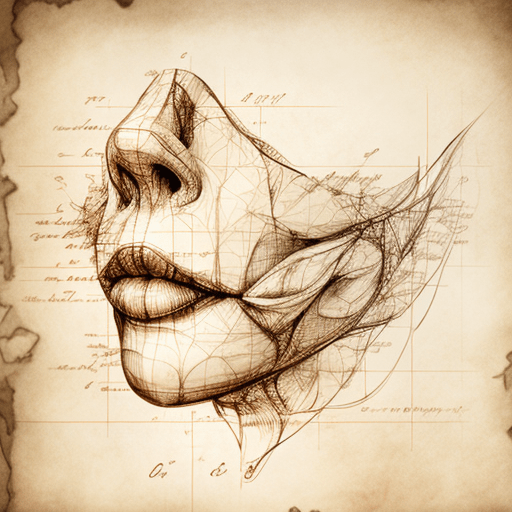

| What is your dominant function? ~ The Body of symbol. Perception mode. | Mental Triangle Idem Think To think, memorize, analyze, synthesize and visualize what we want to live as an experience. Oriented towards the future. Linked to the cognitive brain (neo-cortex).
| Emotional Circle Idem Feel To desire, to feel what we want, thus creating a magnet, a magnetic energy around us to attract the elements necessary for the manifestation of this desire. Based in present. Linked to the limbic brain. | Instinctive Square New - Do It is a binary (yes/no) brain and the same situation, the same stimulus, will always result in the same response. Immediate response, like a reflex. Oriented towards the past. Linked to the reptilian brain. |
| Where do you get your energy from? ~ The Soul of symbol | Extroversion Idem Centered on the outside world. | Introversion Idem Centered on the inner world of ideas and thoughts.
| Ambiversion New Element taken from the ambo lat. meaning "(the) two at the same time". |
| What is your main decision making process? - The Spirit of Symbol | Reason Idem Jugement Decides by rational and logical process. | Intuition Idem Global and immediate perception. | Expérience New Pragmatic mind based on experience |
Concerning introversion and extroversion, which both correspond to the two universal forces of attraction and expansion, where as the alchemists say to coagulation and dissolution (solve and coagula), we must not forget that the result of this double energy is the creation of a third one: transmutation, or integration.
The fact, on the one hand, of introducing one more criterion in the categories and, on the other hand, of adopting a ternary typology increases the number of possible cases from 16 to 27. On one side 2x2x2 and on the other 3x3x3.
Either 27 ways of interpreting a symbol ...
A complete profile includes 6 of them (5 personal symbols by name and 1 by date of birth)... more than a million different profiles.
Each of these three bodies emanates from a "morphic field" that acts as a mold, a lattice or mesh on which are positioned quanta of information or digital data.
The process by which the digital data (numbers) materialize into geometric forms is carried out by "morphic resonance".
The body thus formed keeps in itself the memory of the central computer, the spirit, and inherits the nature of the energy transmitted by the soul. It then becomes the carrier of a vibration of its own, which extends beyond the visible limits of its physical body and evolves over time.
  | ||
| Mental | Emotional | Instinctive |
| Thinking | Feeling | Acting |
| Truth | Values | Will |
| Mission | Life | Destiny |
| Future | Present | Past |
| Nervous | Circulatory | Digestive |
| Time | Energy | Space |
| Eyes | Word | hands |
| Logic | Values | Facts |
| Explication | Persuasion | Demonstration |

The Mental Body, or Intellect, is the place of choices, decisions, plans and projects. It is the seat of reflection and planning (weighing the pros and cons before acting).
Its function is to memorize, orient, set the course. This body is associated with the law of gravity.
It reasons by analysis and synthesis based on objective information.It is oriented towards the future.
It is linked to the neocortex, which refers us to the so-called higher functions such as memory, abstraction capacity, etc..
The Emotional Centre is interested in our desires and needs and those of others.
The Emotional Center serves us to connect with others, but also with ourselves (feeling). Like our emotions, it lives deeply in the moment.
It provides the link between the mental body and the physical body. It ensures the role of the machine room. It animates the body, sets it in motion. Its mode of operation is essentially electromagnetic.
It is linked to the limbic brain, which sends us back to our emotions and feelings.
The first body is thus the physical (or Instinctive) body symbolically composed of the four elements. It is the seat of sensations that allow us to interact with our environment, to exchange with others. The atomic cohesion ensures the stability of the edifice over time.
The Instinctive Body ensures our physical and psychological survival.
It is the center of our vital energy, of our spontaneous acts, of our physical coordination, of our creativity in action.
It is linked to the reptilian brain, which sends us back to our instincts. Oriented to the past.
What is an ambivert? An ambivert is someone who exhibits qualities of both introversion and extroversion, and can flip into either depending on their mood, context, and goals.
Ambiverts have also been called:
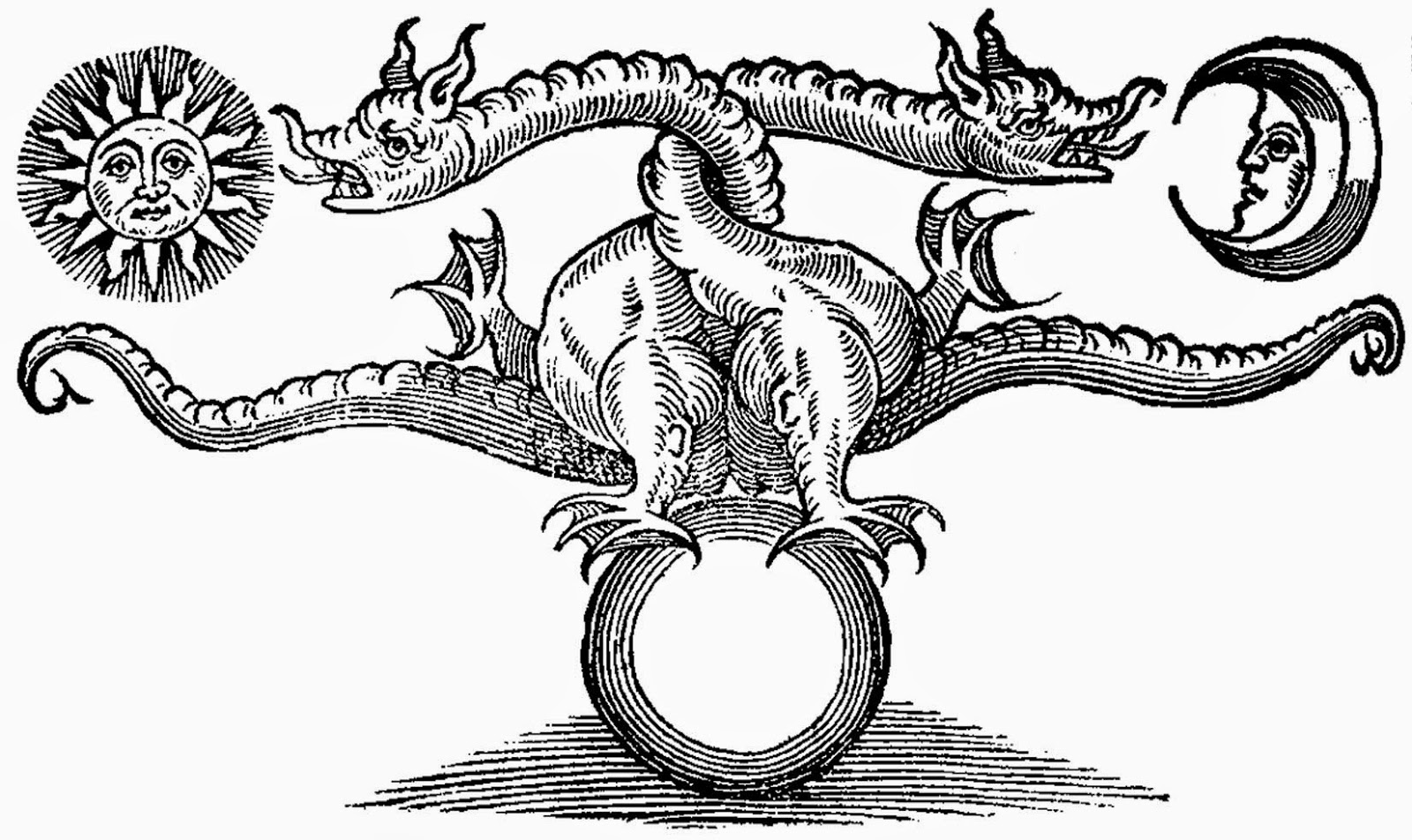
Jung distinguishes between two main types of character: the introverted character and the extroverted character.
The extroverted character is characterized by an interest in events, beings and things, a relationship, a dependence on them. It is motivated by external factors and greatly influenced by the environment.
Conversely, the introverted attitude is a withdrawn attitude, inwardly oriented, focused on subjective factors, influenced mainly by intimate necessity. It prefers reflection to action.
 |  |  |
| Extrovert | Ambivert | Introvert |
| Solve | Mutatio | Goagula |
| Expansion | Evolution | Concentration |
| Emphasis | Integration | Insight |
| Radiation | Mutation | Gravitation |
| Analytic | Analog | Synthetic |
| Action | Creation | Reaction |
| Give | Exchange | Take |
| Speak | Dialogue | Listen |
| Emissive | Self-Reflective | Receptive |
In his book "Thinking, Fast and Slow" published in 2011, the psychologist Daniel Kahneman (winner of the Nobel Prize in Economics in 2002), describes the state of knowledge in a stream of research that defines two modes of thinking involved in judgment and decision-making: intuitive thinking (which he calls "system 1") and rational thinking (system 2).
System 1 is made up of intuitive, automatic (unconscious or deliberate) and rapid reactions on which most of our decisions are based. Intuition has the advantage of speed and efficiency in many contexts. Overconfidence in the validity of one's intuition is a common error.
System 2 corresponds to more deliberate (consciously directed), analytical and logical thinking. It intervenes when an intuitive judgment is insufficient and helps to reduce its negative effects. This thinking is slower and requires more effort. It is not used for all decisions and judgments in everyday life.
In case of serious cognitive conflicts between intuition and logic, our brain necessarily needs another system of arbitration, of inhibitory control (System 3 called "executive").
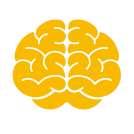 |  |  |
| Reason | Intuition | Experience |
| Spirit | Soul | Body |
| Brain | Heart | Will |
| Radiation | Emanation | Formation |
| Jugement | Personal Values | Facts |
| The Spirit of geometry | The Spirit of finesse | The Practical Spirit |
| Future | Present | Past |
Reason is the ability to know, to analyze, to criticize, to judge, to formulate hypotheses, to establish relationships and to form concepts, proper to man.
Reason refers to the intellectual faculties considered in their functioning, the ability to think, which allows one to judge well and apply judgment to one's actions.
For its part, reasoning refers to the thinking faculty that applies itself to knowing a being in a logical process.
Reasoning associates and compares data to determine similarities and differences between beings. It calls upon induction (from particular to general) as well as deduction (from general to particular), analysis as well as synthesis.


Intuition is a way of knowing, thinking or judging, perceived as immediate (in the sense of direct).
Intuition seems to be immediate because it seems to operate without using reason, and is generally perceived as unconscious: only its conclusion is then available to conscious attention.
For Plato, intuition is the immediate grasp of the truth of the idea by the soul independently of the body.
The domain of intuition is broad: it concerns knowledge itself (representation of the world) as well as feelings (about things) or motivations (to act).

Intuition is a superior faculty that allows us to see inside things.
It is a faculty linked to the soul obtained by expansion of consciousness. Intuition is "the ear of the soul".
Perception is the activity by which a subject experiences objects or properties present in his environment. This activity is usually based on information delivered by the senses.
Perception through experience is an empirical process, which today uses sophisticated experimental methods.
Experience is lived experience, i.e. knowledge acquired through sensitive experience (sensation and senses), as opposed to pure a priori knowledge.

Thus, experience can also take several forms:
